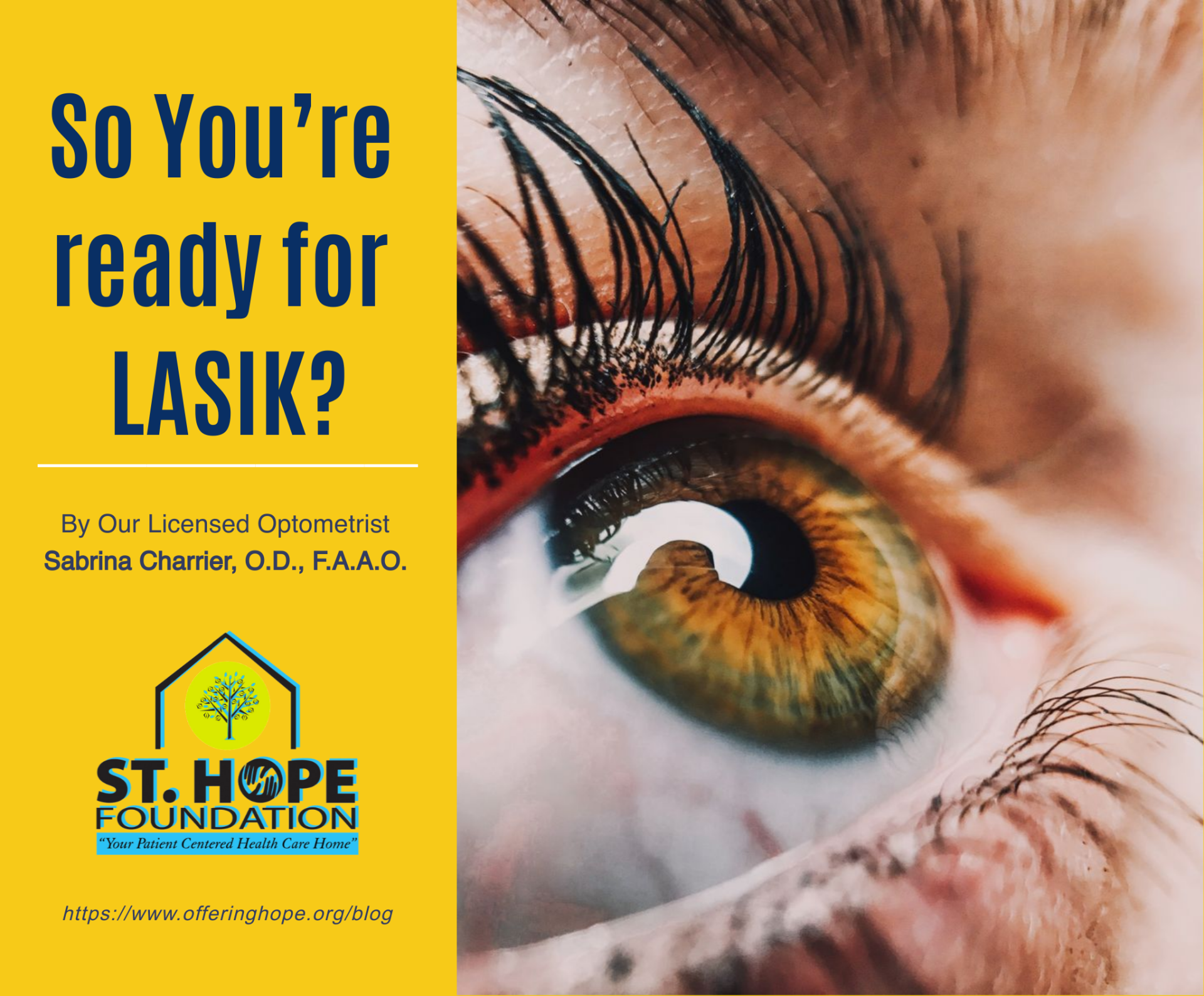Recent Posts
So You’re Ready for LASIK?

How tired are you of your glasses fogging up from your mask? In fact, you’re not only tired of foggy glasses but glasses in general? You have finally decided to do it. You want LASIK.
First, let’s talk about what is LASIK. LASIK stands for Laser-Assisted In Situ Keratomileusis. The clear dome on the front of the eye is called the cornea. It is used to focus light to the back of the eye but may not come to focus exactly where it needs to be and causes blur. This can show up as myopia (near-sightedness), hyperopia (far-sightedness), and astigmatism. In LASIK, the cornea is reshaped to change that focus to the retina.
Typically, You need to be at least 18 years old and have healthy eyes with stable vision. Certain conditions can disqualify you from having surgery but there are many conditions that need to be evaluated at the time of your exam to see if you may still be able to have it done. For instance, severe dry eye patients may not be great candidates, however, those with mild dry eye can start treatment and have a successful outcome. Patients with very thin corneas or eye problems like keratoconus would not be able to have surgery, however.
If you wear hard or soft contact lenses, you will need to stay out prior to the evaluation prior to surgery. The surgery center may ask for you to stay out for at least 3 days or longer.
Next, we’ll discuss how it’s done. The whole procedure only takes about 15 minutes from start to finish. Eye drops are used to numb the front surface of your eyes. A flap has to be created past the top layer of the cornea. This is now typically done with a laser. Another older method to do this was with a microkeratome blade. This flap is lifted to expose the stroma, the central layer of the cornea. This is where the reshaping occurs. Once finished, which only takes seconds, the flap is replaced. Boom! You can see! Your vision will still be a little hazy right after surgery, almost like you’re looking under water. You’ll need someone to drive you home afterwards.
The procedure causes very little pain, if any. There are no stitches. In close to 30 years of being performed, LASIK has shown great stability in remaining independent from glasses. Even if your vision changes over time or you start wearing reading glasses, you may be able to have it adjusted.
Finally, this is what kind of side effects you can expect to experience after surgery. On the day of your procedure, you’ll want to eat a light meal and not wear eye makeup. As I mentioned before, you will likely have already stayed out of your contact lenses but be sure to bring your glasses.
After your procedure, as mentioned before, your vision may be foggy but will begin to clear even as soon as later that day. You may still notice fluctuating vision for several weeks to months afterwards. There may be some discomfort with your eyes as well. Your doctor will likely have you using preservative free artificial tears and medicated drops to help. Other common side effects include glare, halos around lights, dry eyes, and light sensitivity. Most of these resolve within 3-6 months after surgery but can occasionally take longer to return to normal. Even if your eyes do not feel dry afterwards, they likely are. Those artificial tears will become your new best friends. When in doubt, just put some more tears in. As it is still a surgery, other more serious side effects can include problems that can permanently affect your vision or you may lose some of your best corrected vision.
You’ll have goggles or eye shields to sleep in for the first few days after surgery. You won’t be able to go into a hot tub or pool for a couple of weeks afterwards and no eye rubbing for a while either. Your doctor will ask you to return for follow up visits as well.
I love LASIK. Personally, I had it about seven years ago and would do it again in a heartbeat if I ever needed to. It’s given me so much more freedom than I had ever expected to gain and it’s been a blessing not to have to worry about my glasses fogging up also. Most people are good candidates. If you want to find out if you’re a good candidate then talk to us at your next eye exam. We will start your evaluation process and then refer you to a reputable LASIK surgery center.









